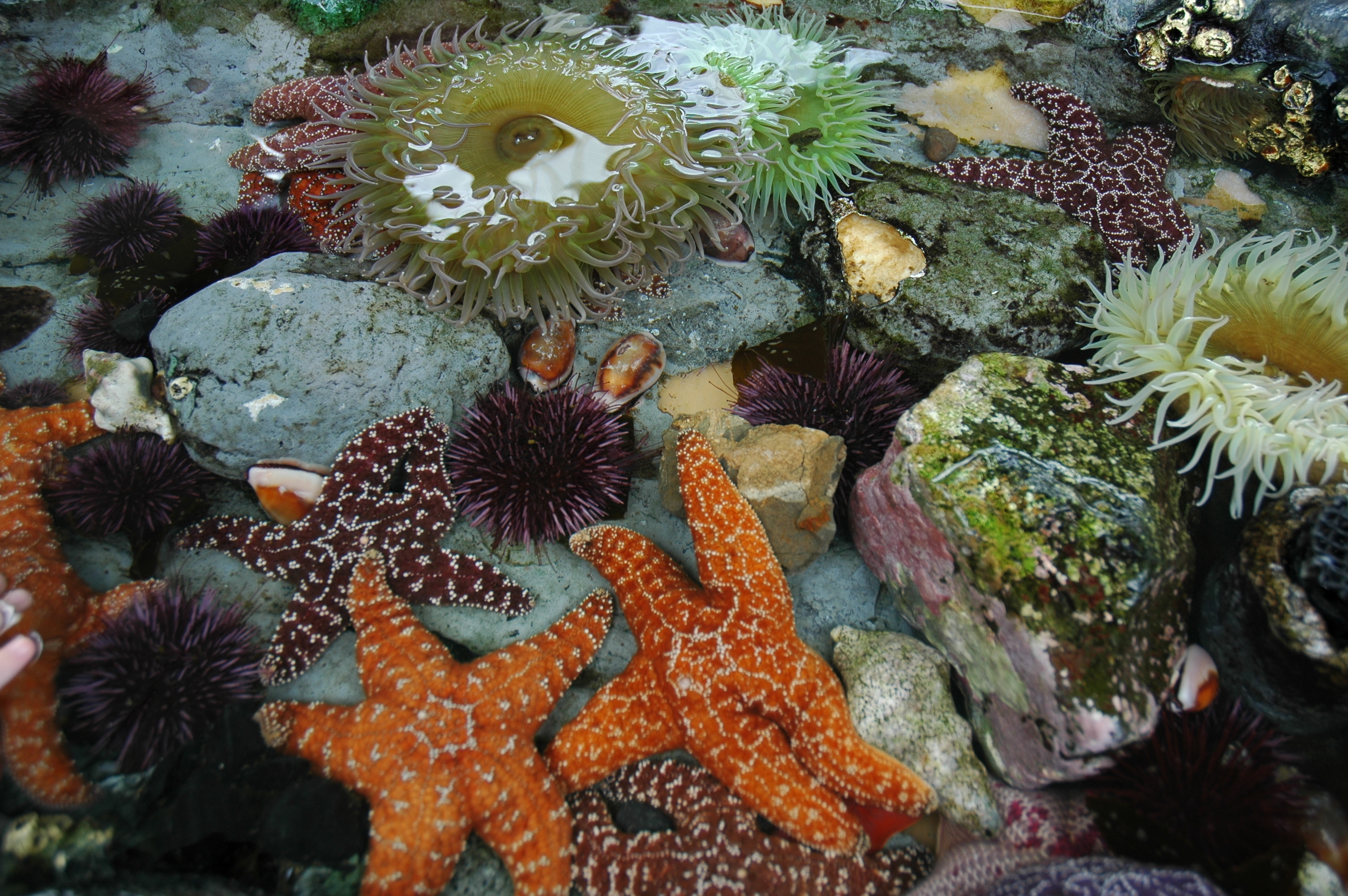Seashore is the place where the land and the sea meet. It is an area of continual change. As the sea rolls in at high tide, much of the shore becomes part of the ocean. At low tide, the sea retreats and the same area again becomes part of the land. But in spite of this ever-changing environment, the seashore supports a great variety of living things. Many of these organisms live nowhere except along the ocean’s edge.

A mass of tiny organisms, called plankton, play an important role in the life of the seashore. These organisms swim or float on the ocean tide. Many of them remain part of the plankton for their entire life, but others grow into larger animals of the seashore. Most large seashore animals start their existence as larvae, planktonic creatures that bear little resemblance to their parents. Most larvae die, but some of them land on a suitable shore and grow into adults.
As ocean waves sweep across the shore, they carry with them a feast of plankton. Many seashore animals feed on these tiny organisms. Such creatures as barnacles, mussels, oysters, and sponges spend their adult life permanently attached to the shore. These shore animals eat the plankton when it comes to them. Other kinds of animals, including clams and worms, burrow into the shore and collect food from water containing plankton. Even shorebirds that feed on the plankton-eating creatures rely indirectly on the plankton.
Scientists classify seashores into three main types, depending on their surface: (1) rocky shores; (2) muddy shores; and (3) sandy shores. Characteristic groups of organisms live on each type of shore.
Life on rocky shores
is more plentiful than on any other type of seashore. Great numbers of organisms crowd the hard, rough surfaces of coral reefs and wave-scarred cliffs. They must withstand powerful waves that could wash them away or crush them on the rocks.
Most organisms that live on rocky seashores have special features that hold them securely to the rocks and coral. Many adult animals, including barnacles, mussels, oysters, sea squirts, and sponges, permanently anchor themselves to the shore. Others, such as chitons, limpets, sea anemones, sea urchins, and starfish, also attach themselves firmly to the shore. But these creatures are capable of moving short distances.
Some animals, including plantlike bryozoans and hydroids, have flexible bodies that bend with the motion of the waves. Large seaweeds, such as kelps and rockweeds, cling to the shore with structures called holdfasts. Many species of worms and other creatures burrow into the rock and coral, and others jam themselves tightly into cracks.
When the tide goes out on a rocky shore, small pools of water remain behind. These tide pools provide a refuge for crabs, fish, and other seashore creatures that need to remain in seawater. Such animals live in the tide pools until the incoming tide again covers the shore.
Most animals that live on rocky shores eat plankton. A few, including rock crabs and starfish, feed on the creatures that eat the plankton. Water plants and algae create their own food in a process called photosynthesis (see Photosynthesis ).
Life on muddy shores.
Most muddy seashores lie in bays, where they are protected from strong waves. Rivers empty into many of these bays, decreasing the saltiness of the sea water. Plants–including grasses and, in the tropics, mangrove trees–thrive along the shores. Crabs and turtles live among these plants. Clams and worms burrow into the muddy bottom of the seashores.
Life on sandy shores.
Sandy beaches have fewer forms of life than do rocky or muddy shores. Most plants and animals cannot attach themselves strongly enough in the loose sand to withstand the effects of waves and currents. Most animals of sandy shores–including clams, crabs, and sand dollars–burrow under the sand. Few plants live on sandy shores between the levels of high and low tide.
